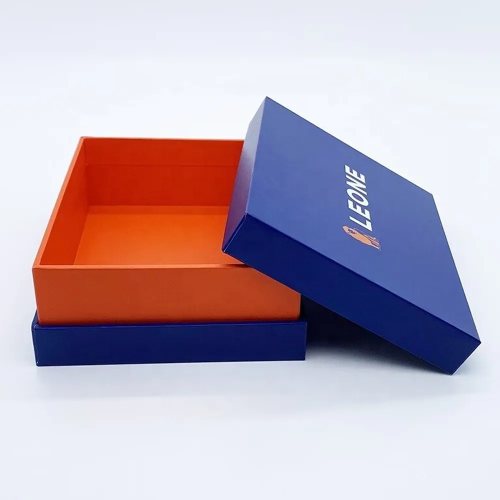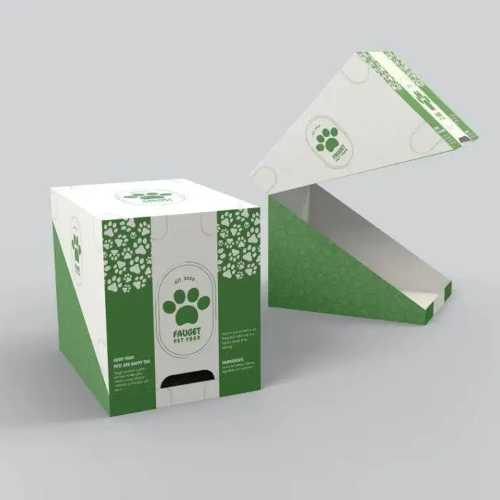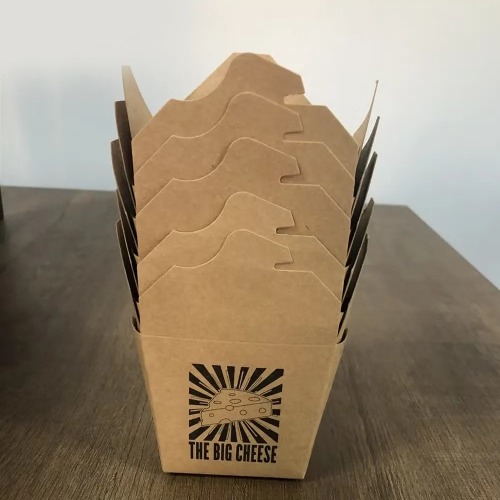Endure Material within Custom Packaging for Visibility
December 27, 2023
In this changing environment, packaging, in particular, has become a crucial component that allows businesses to communicate their distinct brand and draw in their target market. Packaging is now more than just a functional element in the fast-paced, cutthroat business world; it is a potent weapon for engaging customers and differentiating brands. Custom Packaging goes above and beyond the traditional strategy of generic packaging, enabling companies to create a unique visual brand that appeals to customers. This packaging's design, colour palette, and even the materials used were chosen carefully to arouse particular feelings and impressions, making it an immersive and unforgettable brand experience.
Custom Packaging Help in Storytelling with Various Options
This packaging's storytelling potential is one of its main features. Businesses can immediately express their brand narrative, values, and product features to consumers through well-considered design elements. By building a relationship with the audience through storytelling, as described by Custom Packaging, a brand can increase brand memory and loyalty. Making an impression and standing out is crucial at a time when consumers have a plethora of options. Packaging solutions that complement a brand's personality, values, and overall marketing strategy remain created for this packaging. The supply chain may remain streamlined, and packaging waste can decrease by customising this packaging to fulfil specific logistical needs.
Highlight Adaptability and Product Usefulness with Custom Packaging
In addition to being aesthetically pleasing, this packaging is essential for raising a product's perceived value. Customer’s perceptions of the enclosed goods are improved when they come across a carefully thought-out and beautifully packaged product. This psychological impact can affect decisions about what to buy and raise the brand's perceived value. Custom Packaging, a brand's strategy for positioning itself in the market and obtaining premium pricing, increasingly depends on this packaging. Thus, businesses can profit practically from this packaging. The packaging's ability to improve the brand's visual appeal and cater to practical needs highlights its adaptability and usefulness in today's business environment.

Display Packaging Will Arouse Customer's Interest by Awareness
Packaging is an essential and adaptable marketing strategy to present products to prospective buyers. Display Packaging is meant to draw attention and make a statement at the point of sale, in contrast to typical packaging, primarily concerned with safeguarding the goods throughout storage and transportation. It's a calculated move to increase brand awareness and sway consumer choices. Making things stand out on store shelves or in retail settings is the primary goal of this packaging. It skillfully remains designed to catch the eye and provide essential details about the merchandise. By using this packaging, producers and merchants hope to make a lasting first impression that piques customer’s interest and motivates them to learn more about the product.
Foster Confidence for More Sales through Display Packaging
The capacity of packaging to function as a miniature in-store advertisement is one of its main benefits. By highlighting the product's unique selling features and communicating the brand message, Display Packaging becomes a marketing instrument. The use of design, colour, and graphic components is essential for drawing in customers and communicating the core of the offering. So, this packaging has valuable uses. It frequently has elements that let customers see the goods without opening the container, including windows or translucent panels. When a product's aesthetic appeal plays a significant role in the choice to buy, this transparency helps buyers make educated selections and fosters a sense of confidence.
Display Packaging Raise Possibility to Produce Imaginative Designs
Packaging is a quiet salesperson in the highly competitive retail industry. The way a product is displayed has the power to shape consumer opinions and encourage impulsive purchases. By optimising a product's exposure, Display Packaging raises the possibility that it will attract attention and inspire a purchase. Therefore, this packaging makes Innovative and imaginative designs possible, which helps firms stand out in a congested market. On the other hand, this packaging fits specific branding and marketing objectives regardless of the nature of the product. This packaging serves purposes beyond traditional packaging; it is a dynamic and multipurpose instrument.

Avoid Negative Impacts by Enduring Positivity within Soap Packaging
The marketing, preservation, and presentation of this necessary daily item all rely heavily on its packaging. In addition to maintaining the integrity of the soap, packaging is an effective instrument for branding and marketing. Soap Packaging must carefully balance utility and aesthetic appeal in the wide world of consumer goods. This packagingleast protects the soap from environmental elements, including moisture, sunshine, and physical harm, while it is transported and stored. Care must be taken while selecting packaging materials to guarantee their durability, resistance to moisture, and environmental friendliness. Many soap producers choose packaging options with the most minor adverse environmental effects.
Soap Packaging Becomes Captivating to Enhance Preferences
Boxes can help you stand out in a crowded market where many businesses are vying for attention. This packaging's aesthetic appeal plays a significant role in brand identity since it frequently affects consumers’ buying decisions. Bright colours, captivating images, and intelligent typography may capture the spirit of the soap. The size and form of Soap Packaging are crucial factors to consider. Customers must find the packaging easy to handle, open, and store. Small, easy-to-use designs are preferred because they accommodate customer preferences and shop shelf space. Manufacturers must also consider how simple it is to recycle or dispose of waste, in line with customers’ increased awareness of their environmental responsibilities.
















